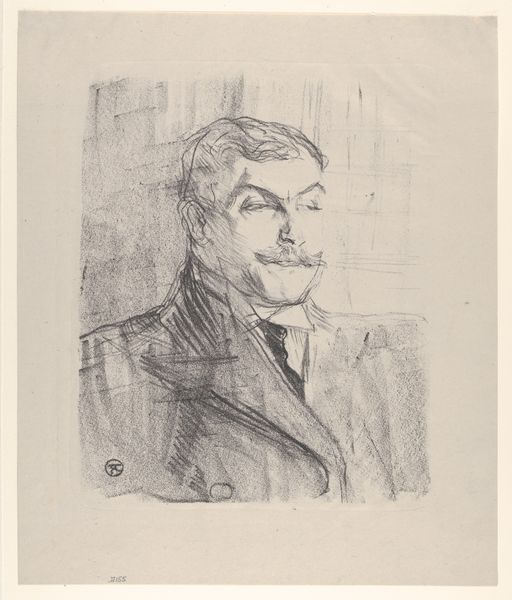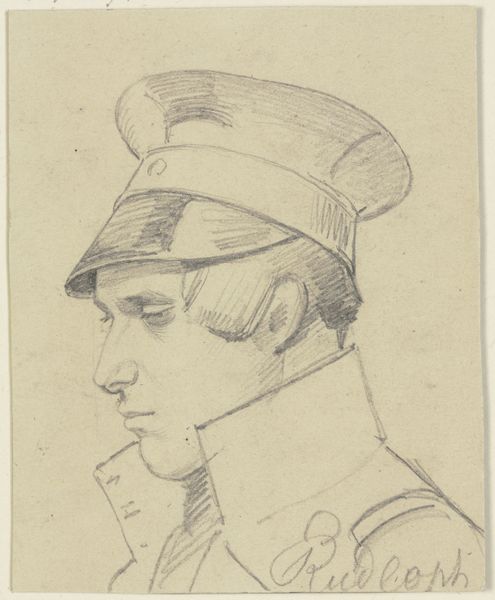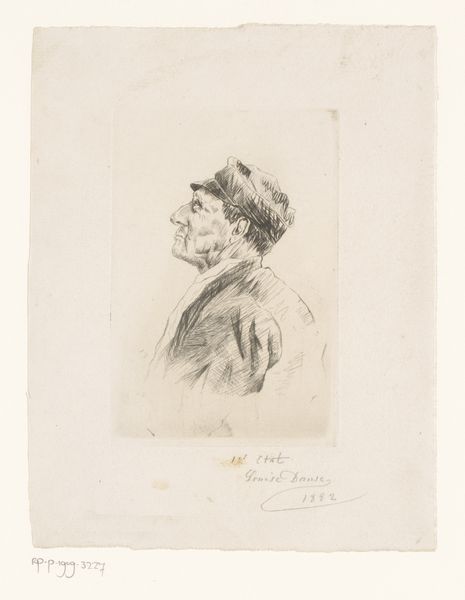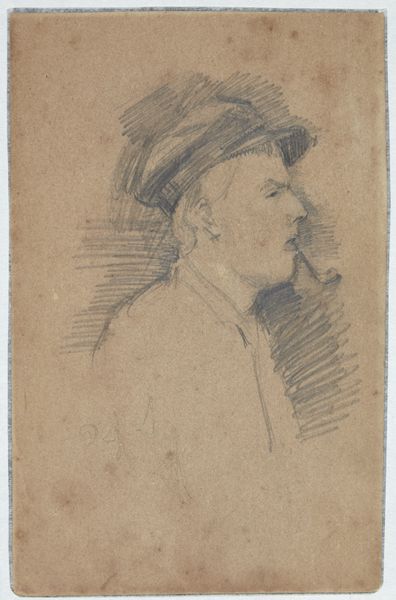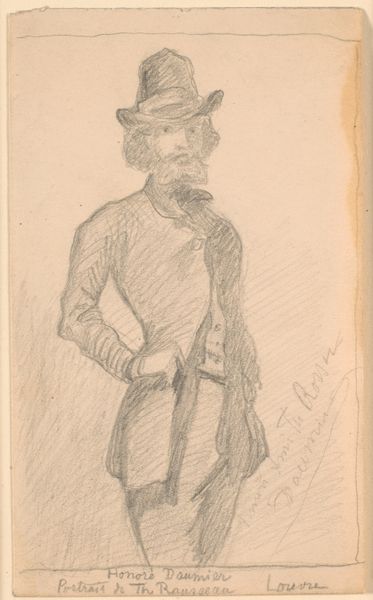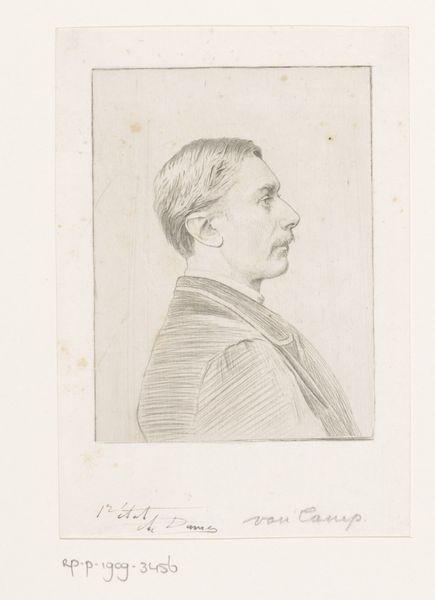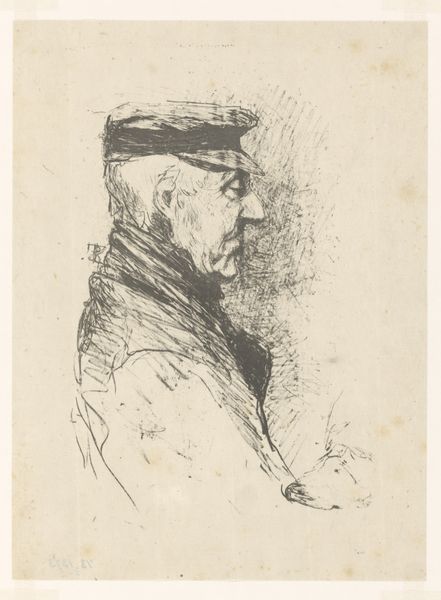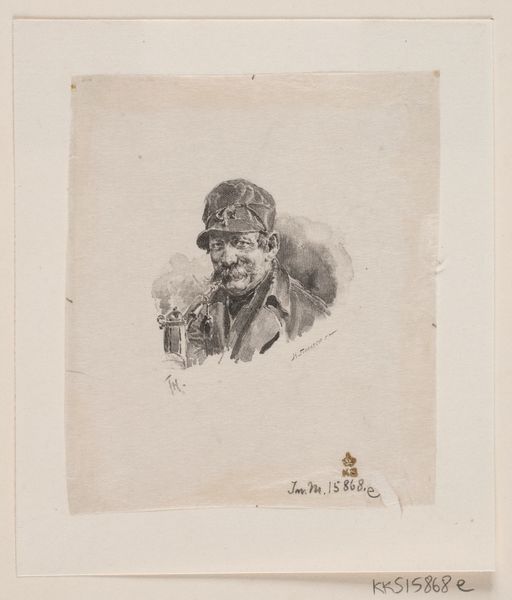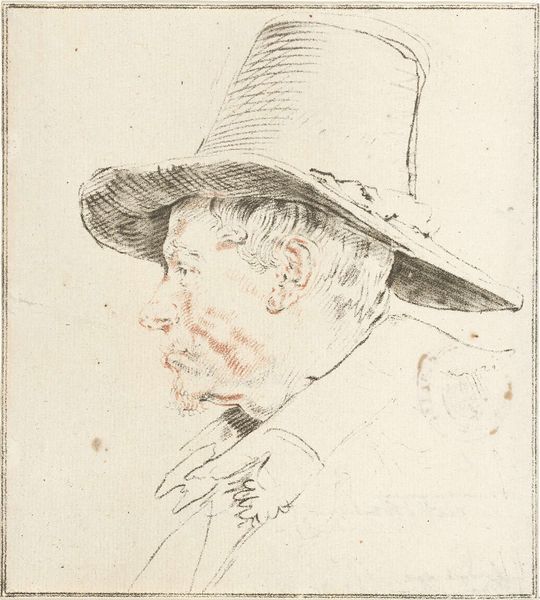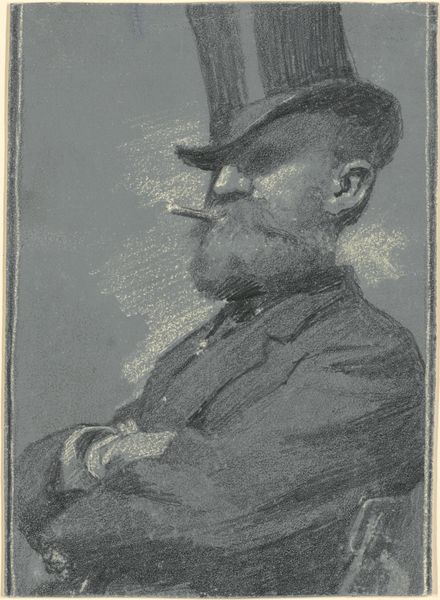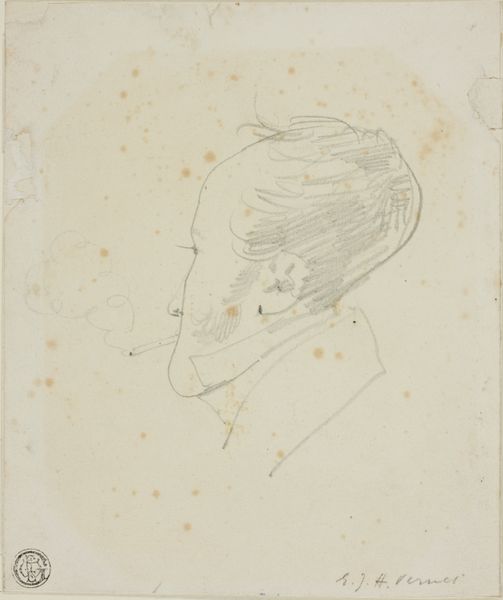
Dimensions: height 193 mm, width 162 mm
Copyright: Rijks Museum: Open Domain
Curator: Welcome. We’re standing before "Portret van Gerrit ter Haar," a pencil drawing created sometime between 1886 and 1919 by Johannes van Gijn. Editor: There’s a quiet intensity about this piece. It feels so personal, almost as if we're intruding on a private moment. Curator: Indeed. Van Gijn was well-regarded for his drawings, and this work showcases his delicate skill. He positions Ter Haar in profile, a common approach to formal portraiture, but then subverts it through his casual impressionistic lines. The very act of capturing Gerrit with a pipe is noteworthy. Editor: Right, the pipe—it speaks volumes. It’s not just an accessory; it’s a symbol of contemplation, of working-class intellect perhaps. But more than that it presents a very masculine portrait, perhaps unconsciously mirroring back assumptions around art and whose image is represented. What was the purpose for such image? Curator: Considering the socio-political context, creating portraits served various functions. It solidified social status or professional standing, so a person was rendered dignified but also relatable. Editor: The light pencil work is what draws me in, though. There’s almost a photographic quality, an engraving-like crispness, yet also a real vulnerability that I wouldn’t have expected. It seems like a candid moment rather than a posed study. It’s also difficult to escape the whiteness presented in this piece, a feature perhaps mirroring the world it aimed to picture. Curator: The composition definitely plays a role there. Van Gijn frames Ter Haar within a rectangular space. Editor: But notice the slight distortion; the man and pipe are in the center, but somehow isolated. Perhaps emphasizing individuality or, perhaps accidentally, feelings of exclusion. How might this image communicate to audiences who are erased from traditional art spaces? Curator: Food for thought. He might also highlight this particular man's standing. Ultimately, this work leaves many points open for further analysis. Editor: Absolutely. The way it blends impressionistic freedom with realism’s dedication to accuracy offers something to everyone.
Comments
No comments
Be the first to comment and join the conversation on the ultimate creative platform.

